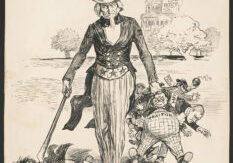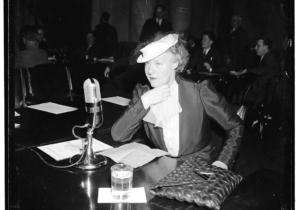Lesson Plans
Espionage, Sedition, Censorship, and Speaking Up
Students analyze a political cartoon created by William Allen Rogers during World War I to give context to press censorship during that war. Next, students explore additional sources from the Library of Congress to analyze how censorship worked both before and after the passage of the Espionage and Sedition Acts of 1917-18. Finally, students compose their own “email to the editor” of a local newspaper or online news source, expressing their own views about the importance of freedom of the press and their informed opinion of press censorship in wartime.
Journalists and a Free Press
Students learn about the crucial role journalists and reporters play in keeping the citizens in a democratic society informed about their community, the nation, and the world. First, students are introduced to the notion of “freedom of the press” from the First Amendment to the U.S. Constitution and discuss the role of journalists in reporting the news to us all. Next, students analyze primary sources related to famous journalists while referring to historical context for each in order to understand the important role these journalists played in their time. Finally, students create an issue of their own school newspaper to understand the responsibility their have as journalists to report accurately, fairly, and truthfully.


